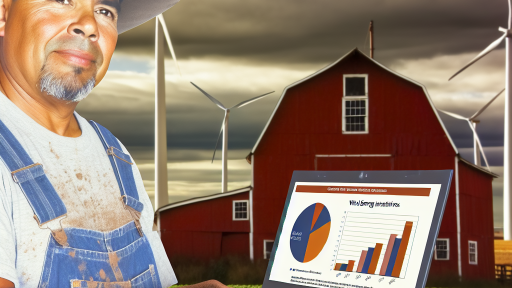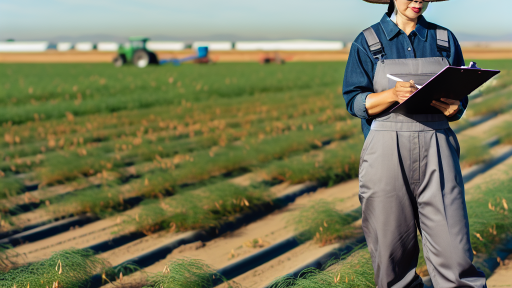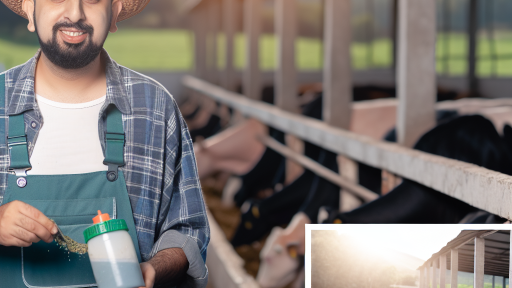Understanding the Basics of Agricultural Insurance
Definition and Purpose
Agricultural insurance protects farmers against potential losses.
It serves as a financial safety net during challenging times.
Farmers can secure their investments by opting for this insurance.
Types of Agricultural Insurance
A variety of insurance options exist for farmers.
Crop insurance is one of the most common types.
This insurance covers losses from adverse weather conditions.
Livestock insurance also plays a crucial role.
It safeguards farmers against the loss of animals due to disease or accidents.
How Agricultural Insurance Works
Farmers pay premiums to secure their policies.
In return, they receive compensation for covered losses.
The amount of coverage can vary significantly.
Farmers can choose policies that best fit their needs.
Benefits of Agricultural Insurance
Agricultural insurance increases financial stability for farmers.
It allows farmers to focus on production rather than risk.
Furthermore, it enables both planning and investment in future crops.
Transform Your Agribusiness
Unlock your farm's potential with expert advice tailored to your needs. Get actionable steps that drive real results.
Get StartedChoosing the Right Policy
Farmers should assess their unique situations carefully.
Understanding specific risks is vital for selecting the right policy.
Consulting with insurance professionals can provide valuable insights.
Additionally, comparing different options can reveal the best coverage.
Farmers must read the fine print to understand what is covered.
Identifying Your Unique Farming Risks and Needs
Understanding Your Farming Environment
Each farm operates in a distinct environment.
Know your local weather patterns and climate conditions.
Factors like rainfall, temperature, and seasonal variations matter.
Conduct a thorough assessment of your soil quality.
Understanding pest and disease prevalence is crucial.
Consider the topography and geography of your land.
Assessing Crop-Specific Risks
Different crops face unique risks throughout their growth cycles.
Identify diseases that commonly affect your crops.
Evaluate the potential for pest infestations in your area.
Be aware of weather-related risks, like droughts or floods.
Understand market fluctuations for your chosen crops.
Livestock Considerations
If you raise livestock, understand their specific risks as well.
Consider health risks associated with various breeds.
Evaluate feed availability and quality issues.
Be aware of the impact of extreme weather on livestock health.
Ensure you have protocols for managing disease outbreaks.
Financial Risks and Insurance Needs
Your financial stability is vital for farm success.
Assess your exposure to market volatility and price changes.
Identify potential risks in operational costs and expenses.
Showcase Your Farming Business
Publish your professional farming services profile on our blog for a one-time fee of $200 and reach a dedicated audience of farmers and agribusiness owners.
Publish Your ProfileConsider how insurance can mitigate financial uncertainties.
Choose policies tailored to your unique farming operations.
Consulting Experts for Comprehensive Insights
Seek the advice of agricultural experts and consultants.
Join local farming associations for resources and support.
Attend workshops and seminars to stay informed.
Utilize online resources for extensive research on risks.
Collaborate with fellow farmers to share experiences.
Types of Agricultural Insurance Policies Available
Crop Insurance
Crop insurance protects farmers against loss of their crops.
It covers various risks such as drought, floods, and pests.
This type of policy ensures financial stability for farmers.
Farmers can customize coverage based on specific crop needs.
For instance, some may prefer revenue protection.
Others might opt for yield protection options instead.
Livestock Insurance
Livestock insurance safeguards against the loss of animals.
It covers risks from disease, accidents, or theft.
Farmers can insure cattle, pigs, poultry, and more.
Additionally, this insurance can cover loss of income due to animal loss.
For many farmers, this policy is essential for livelihood protection.
Farm Property Insurance
Farm property insurance protects the physical assets on a farm.
This includes barns, equipment, and machinery.
It also covers tools and supplies needed for farming operations.
This policy is crucial for minimizing financial losses from disasters.
Farmers can choose from various coverage options as needed.
Revenue Insurance
Revenue insurance ensures that farmers maintain a certain income level.
This policy considers both crop yield and market prices.
Farmers can protect themselves from fluctuating market prices.
Consequently, they manage risk more effectively throughout the year.
This type of insurance caters to farmers looking for income stability.
Farm Liability Insurance
Farm liability insurance protects farmers from lawsuits.
It covers injuries that occur on the farm property.
It also protects against property damage claims from third parties.
This type of policy is vital for operating a farm safely.
Farmers benefit from peace of mind while managing their operations.
Explore Further: Integrating Rural Development Policies into Modern Farming Practices
Evaluating the Financial Impact of Crop Failure on Your Farm
Understanding Crop Failure and Its Implications
Crop failure can severely impact your farm’s financial health.
Financial losses can occur due to various reasons.
Naturally occurring disasters, pests, and diseases can devastate crops.
Each year, farmers face the uncertainty of weather patterns.
This unpredictability makes it crucial to assess risks effectively.
Calculating Potential Losses
To evaluate the financial impact, calculate potential crop yields.
Showcase Your Farming Business
Publish your professional farming services profile on our blog for a one-time fee of $200 and reach a dedicated audience of farmers and agribusiness owners.
Publish Your ProfileUse historical data to estimate average production rates.
Next, determine the market value of your crops.
This information helps project your expected income.
When crop failure occurs, you can compare this to your projections.
Expenses Associated with Crop Failure
Crop failure does not only mean lost income.
There are ongoing expenses that must be considered.
These include operational costs such as labor and equipment.
You might also face costs for rehabilitating the land.
Furthermore, if you have debts, those payments continue regardless.
The Role of Agriculture Insurance
Agricultural insurance can mitigate some financial risks.
It provides coverage against unexpected crop losses.
Farmers should assess the different policies available.
Consider factors such as premiums, deductibles, and coverage limits.
This helps ensure you choose a policy that meets your needs.
Comparative Analysis: Before and After Crop Failure
Analyze your farm’s financial state before and after crop failure.
Document the changes in income and expenses thoroughly.
This can help identify the most significant financial impacts.
Moreover, it allows for better planning in the future.
Such analysis can highlight areas needing improvement.
Strategizing for Future Resilience
Building financial resilience is key for farmers.
Diversifying your crops can spread risk effectively.
Additionally, incorporating technology can enhance yield predictions.
Consider joining cooperatives for shared resources and information.
These strategies create a stronger financial foundation.
Delve into the Subject: Managing Risk with Agricultural Insurance Solutions
Customizing Coverage Options to Fit Your Farm’s Scale and Type
Assessing Your Farm’s Unique Needs
Every farm operates under different circumstances and challenges.
First, evaluate your farming type and practices.
Consider variables such as crops, livestock, and land size.
Additionally, assess your region’s climate and weather patterns.
This assessment helps identify potential risks to your operation.
Types of Coverage Available
Understanding the variety of coverage options is crucial.
These options can be tailored to meet specific needs.
Some key types of coverage include:
- Crop insurance for unexpected losses.
- Livestock insurance for animal health and losses.
- Farm property coverage for buildings and machinery.
Each type has distinct features and benefits.
Scaling Insurance to Fit Your Farm
Your farm’s size plays a significant role in selecting coverage.
Smaller farms may require basic policies to manage costs.
Larger operations often need comprehensive plans for extensive assets.
Adding or adjusting coverage helps maintain financial stability.
Selecting the Right Provider
Choosing an agricultural insurance provider is essential.
Research multiple companies and compare their offerings.
Showcase Your Farming Business
Publish your professional farming services profile on our blog for a one-time fee of $200 and reach a dedicated audience of farmers and agribusiness owners.
Publish Your ProfileConsider factors such as local expertise and customer service.
Additionally, look for testimonials from other farmers.
This information verifies the provider’s reliability and effectiveness.
Regularly Reviewing Your Policy
Insurance needs may change over time.
Annually review your policy to ensure it remains comprehensive.
Adjustments may be necessary due to expansion or new challenges.
Regular reviews help you stay adequately protected.
Learn More: Wildlife Conservation Programs In Agriculture

The Role of Government Programs in Agricultural Insurance
Importance of Agricultural Insurance
Agricultural insurance plays a crucial role in protecting farmers.
It helps mitigate risks associated with unpredictable weather conditions.
Additionally, it offers financial security during crop failures or natural disasters.
Types of Government Programs
Various government programs support agricultural insurance in different ways.
These programs often include subsidies for farmers to lower their costs.
They also provide safety nets during challenging agricultural seasons.
Subsidized Premiums
Subsidized premiums make insurance more affordable for farmers.
This support enables farmers to access necessary coverage.
Many farmers depend on these subsidies for financial stability.
Disaster Assistance Programs
Disaster assistance programs are critical during emergencies.
They provide immediate financial support after catastrophic events.
These initiatives help farmers recover and rebuild quickly.
How Government Programs Influence Insurance Options
Government programs significantly influence the types of insurance available.
Farmers benefit from tailored options that match their specific needs.
In addition, these programs encourage innovations in coverage offerings.
Business Interruption Insurance
Business interruption insurance is an emerging option for farmers.
This coverage protects income during periods of disruption.
It’s especially useful during adverse weather conditions.
Whole-Farm Revenue Protection
Whole-farm revenue protection covers multiple crop types in one policy.
This approach simplifies insurance for diverse farming operations.
It helps ensure income stability across various crops and livestock.
Impact on Farming Practices
Government insurance programs encourage modern farming techniques.
Farmers are more likely to adopt innovative practices with insurance protection.
Consequently, these practices can lead to increased productivity.
Safety Measures Adoption
Farmers may enhance on-farm safety due to insurance incentives.
By investing in better infrastructure, they can protect their crops.
This includes improved irrigation systems and climate-resistant varieties.
Collaboration with Private Insurers
Government programs often collaborate with private insurance companies.
This partnership can expand coverage options for farmers.
It also leads to competitive pricing in the insurance market.
Gain More Insights: Legal Incentives for Sustainable Agricultural Practices
Best Practices for Filing Claims and Managing Policies
Understanding Your Policy
Familiarize yourself with your insurance policy details.
Showcase Your Farming Business
Publish your professional farming services profile on our blog for a one-time fee of $200 and reach a dedicated audience of farmers and agribusiness owners.
Publish Your ProfileIdentify the coverage options and limits included in your plan.
Clarify any technical terms or conditions with your insurance agent.
This understanding helps prevent misunderstandings during claim time.
Documenting Incidents
Accurate documentation is essential for a successful claim.
Take detailed notes of any incidents that affect your crops or livestock.
Include dates, times, and a description of the events.
Photograph damages to support your claim effectively.
Timeliness of Claims
File claims as soon as possible after an incident occurs.
Many policies have strict time limits for filing claims.
Delaying might result in denied claims or reduced payouts.
Check specific deadlines in your policy documents.
Working with Your Insurance Agent
Maintain open communication with your insurance agent.
Ask questions whenever unsure about your coverage or claims process.
Be proactive in discussing any changes to your farming operations.
Frequent updates help ensure appropriate coverage levels.
Reviewing and Updating Your Policy
Regularly review your insurance policy to ensure it meets your needs.
Adjust coverage as your farming operations expand or change.
Additionally, consider seasonal fluctuations that might affect coverage needs.
Understanding the Claims Process
Review the specific steps required to file a claim.
Follow all prescribed procedures to avoid complications.
Gather all necessary documents before initiating a claim.
Submit your claim form and required documentation promptly.
Receiving Assistance During Claims
Don’t hesitate to seek help if you encounter difficulties.
Contact your agent or customer service for guidance.
Use available resources such as online seminars or workshops.
Stay informed about best practices in claims management.
Learning from the Experience
After a claim is settled, evaluate the experience.
Reflect on what went well and what could improve.
Incorporate learned lessons into future practices.
Continuous improvement helps effectively manage risks in the future.
Future Trends in Agricultural Insurance and Technology
Emerging Technologies
The agricultural insurance sector is rapidly evolving due to technological advancements.
Data analytics plays a crucial role in assessing risks and enhancing decision-making.
Farmers now utilize satellite imagery to monitor crop health effectively.
Moreover, drones are transforming how insurers evaluate damaged areas after disasters.
These technologies increase efficiency and accuracy in crop assessments.
Personalization of Insurance Products
Insurers are moving towards tailored solutions to meet diverse farmer needs.
Customized coverage options allow farmers to choose policies based on their specific crops.
This flexibility enhances farmers’ control over their insurance strategies.
Additionally, usage-based insurance models are gaining popularity.
These models adjust premiums based on actual farm performance, promoting fairness.
Showcase Your Farming Business
Publish your professional farming services profile on our blog for a one-time fee of $200 and reach a dedicated audience of farmers and agribusiness owners.
Publish Your ProfileIntegration of Climate Data
Climate data integration is crucial for agriculture’s future insurance landscape.
Insurers are increasingly relying on climate models to predict risks effectively.
This predictive capability helps in designing more relevant insurance products.
Furthermore, integrating historical weather patterns aids in better risk evaluation.
This data-driven approach significantly enhances the efficiency of payouts after disasters.
Blockchain Technology
Blockchain technology is revolutionizing agricultural insurance through transparency.
This technology helps establish a secure, tamper-proof record of all transactions.
As a result, it builds trust between policyholders and insurers.
Also, smart contracts enable automatic claim processing, reducing delays.
The increased transparency simplifies compliance with regulatory requirements.
Collaboration with Tech Companies
Insurance companies are forming partnerships with technology firms.
This collaboration fosters the development of innovative solutions in agricultural insurance.
By leveraging expertise, insurers can create advanced risk assessment tools.
Such partnerships also drive the integration of artificial intelligence into the sector.
AI enhances the accuracy of predictions and overall risk management techniques.
Additional Resources
Adaptation and development pathways for different types of farmers …




